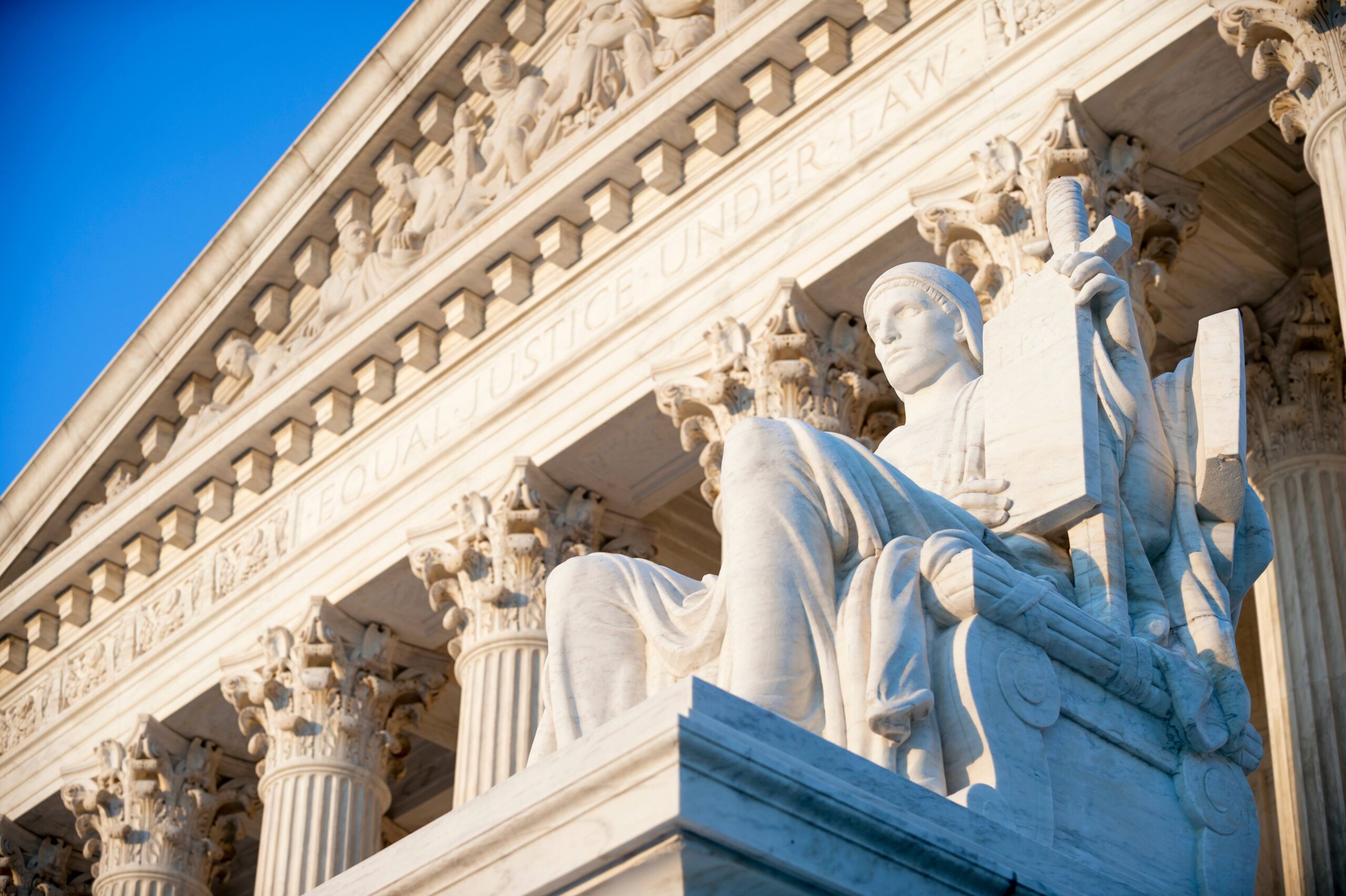Virginia Governor Youngkin Tax Plan: Details & Analysis
On December 20th, Virginia Governor Glenn Youngkin (R) unveiled the contours of a taxA tax is a mandatory payment or charge collected by local, state, and national governments from individuals or businesses to cover the costs of general government services, goods, and activities.
reform plan incorporated into his forthcoming budget. The plan includes three major structural elements: a reduction in the individual income taxAn individual income tax (or personal income tax) is levied on the wages, salaries, investments, or other forms of income an individual or household earns. The U.S. imposes a progressive income tax where rates increase with income. The Federal Income Tax was established in 1913 with the ratification of the 16th Amendment. Though barely 100 years old, individual income taxes are the largest source of tax revenue in the U.S.
rate, a 0.9 percentage point increase in the sales taxA sales tax is levied on retail sales of goods and services and, ideally, should apply to all final consumption with few exemptions. Many governments exempt goods like groceries; base broadening, such as including groceries, could keep rates lower. A sales tax should exempt business-to-business transactions which, when taxed, cause tax pyramiding.
rate, and the broadening of the sales tax baseThe tax base is the total amount of income, property, assets, consumption, transactions, or other economic activity subject to taxation by a tax authority. A narrow tax base is non-neutral and inefficient. A broad tax base reduces tax administration costs and allows more revenue to be raised at lower rates.
to include some “new economy” digital services. There is also a significant expenditure component to the plan, which we will not consider in detail in this analysis.
Income Tax Rate Reduction
The proposed plan includes significant cuts to individual income tax rates in Virginia without changing the existing bracket structure, starting from the calendar year 2025. Under the plan, the state would continue to have four relatively narrow income tax brackets. However, the current rates of 2 percent, 3 percent, 5 percent, and 5.75 percent will be reduced to 1.75 percent, 2.65 percent, 4.40 percent, and 5.10 percent, respectively. The top marginal rate would go down by 0.65 percentage points (a reduction of 11.3 percent).
According to initial estimates of the plan’s impact on general fund revenues, individual income tax revenues would decline by $2.3 billion in FY 2026, the first full fiscal year in which the rate reductions would be in effect. (Income tax collections would decline by $1.1 billion in FY 2025, which spans half of tax year 2024, before the implementation of rate reductions).
The proposed income tax rate reduction will make the state more competitive, especially considering that many neighboring states have either traditionally had lower tax rates (as is the case for Pennsylvania) or recently reduced their top marginal tax rates and improved their overall tax structure (as is the case for West Virginia and North Carolina).
Sales Tax Rate Increase
To partly compensate for reduced income tax collections, Youngkin’s tax plan includes a 0.9 percentage point increase in the sales tax rate, which would increase the state sales tax from 4.3 to 5.2 percent. Additionally, all jurisdictions in Virginia opt into a 1 percent local sales tax, administered by the Commonwealth, and major population centers—Northern Virginia, Richmond, and Hampton Roads—have an additional 0.7 percent transportation district levy. In a relatively new development, there is now limited authority for certain jurisdictions to impose additional local option sales taxes.
Currently, therefore, most of the state has a 5.3 percent combined rate, while most densely populated regions have a 6.0 percent combined rate, and residents of certain jurisdictions in the Historic Triangle region face a 7.0 percent rate. These would rise to 6.2 percent, 6.9 percent, and 7.9 percent, respectively. Considering that Pennsylvania, Maryland, and West Virginia all tax sales at 6 percent, the proposed increase would not make the majority of the state considerably less competitive than its neighbors, though many residents would experience at least slightly higher sales taxes than they would across state borders.
This sales tax rate increase, according to preliminary estimates, would generate $520 million in FY 2025 and $1.3 billion in FY 2026.
Sales Tax Base BroadeningBase broadening is the expansion of the amount of economic activity subject to tax, usually by eliminating exemptions, exclusions, deductions, credits, and other preferences. Narrow tax bases are non-neutral, favoring one product or industry over another, and can undermine revenue stability.
Additionally, Youngkin’s plan proposes to broaden the sales tax base to generate additional tax revenues to compensate for reduced income tax collections. According to the plan, many digital services, primarily those used for final personal consumption, would be included in the sales tax base. These are software application services, website hosting and design services, data storage services, digital downloads, streaming, and other computer-related services.
To the extent that these digital products truly represent final consumption, such modernization is appropriate. There is no reason that consumers should pay sales tax on DVDs but not on video streaming subscriptions. The proposal—we will have to wait on the implementing language—seems to attempt to exclude business purchases of these digital products, which would yield tax pyramidingTax pyramiding occurs when the same final good or service is taxed multiple times along the production process. This yields vastly different effective tax rates depending on the length of the supply chain and disproportionately harms low-margin firms. Gross receipts taxes are a prime example of tax pyramiding in action.
and constitute a partial production tax, though some bleed-through is likely.
Under this proposal, the sales tax base would expand by more than $13 billion, generating an additional $200 million in state revenues in FY 2025 and $510 million in FY 2026, the first full fiscal year of implementation. Notably, base broadening will also generate revenue for local governments and local transportation districts. Whereas the new state sales tax revenues will offset state income tax rate reductions, local governments would experience a significant windfall—not eliminating, but certainly substantially cutting into, overall tax relief.
Combined Effects
Governor Youngkin’s plan is a net tax cut, providing a projected $589 million in state tax relief in the first full fiscal year in which it is implemented. In brief, the income tax rate reductions (plus several other provisions, including the expansion of the earned income tax creditA tax credit is a provision that reduces a taxpayer’s final tax bill, dollar-for-dollar. A tax credit differs from deductions and exemptions, which reduce taxable income, rather than the taxpayer’s tax bill directly.
and a small increase in the cap on scholarship tax credits) are larger than the sales tax pay-fors. This is reasonable, as the Commonwealth has experienced years of surpluses and has room to join the 28 states that have cut individual income taxes since 2021, most of which did so at least partially as a net cut, not fully offset elsewhere.
The local windfall, however, cuts into taxpayers’ savings. Notably, Gov. Youngkin has called for stakeholders to come to the table to find ways to eliminate the local car tax, but this is not in the current plan. Doing so will be expensive. This additional revenue could be a downpayment on that effort, but if given away now with no strings attached, it may be difficult to include in subsequent negotiations.
Analysis
Sales taxes are less economically harmful than income taxes, so reducing reliance on the income tax, partially offset by sales tax modernization and rate increases, can help enhance Virginia’s overall tax competitiveness. The median state’s top income tax rate will be 4.95 percent at the start of 2024, so it makes sense for Virginia, with a top rate of 5.75 percent, to prioritize rate reductions against the backdrop of a highly mobile economy and an increasingly competitive tax environment.
It will be important, however, to ensure that the budget language carefully avoids a broad expansion of the sales tax into business purchases of digital products, not because businesses should receive any special favors, but because these taxes tend to pyramid, imposing multiple hidden and non-neutral layers of tax on certain goods and services. And policymakers should think seriously about what to do with the local tax windfall.
Governor Youngkin’s proposal is likely to face an uphill battle in the legislature, but it represents a step forward in making Virginia more competitive among its neighbors and more attractive for businesses and individuals. Currently, the state has a top marginal individual income tax rate—paid by individuals and most small business owners—that is above the national average, while the combined average sales tax rate is somewhat lower than the national average. The proposed plan would bring Virginia closer to the median state on both important taxes, aligning with a broader trend of transitioning from taxing income to taxing consumption. This shift may prove beneficial for future economic growth.
Stay informed on the tax policies impacting you.
Subscribe to get insights from our trusted experts delivered straight to your inbox.
Subscribe
Share






